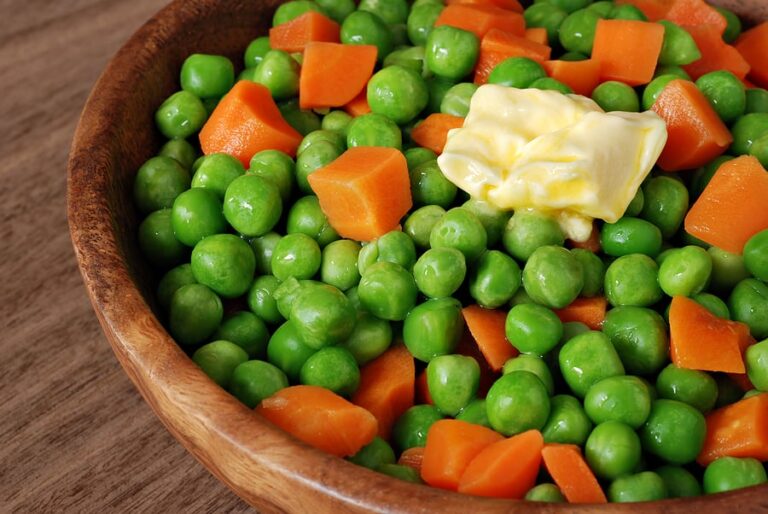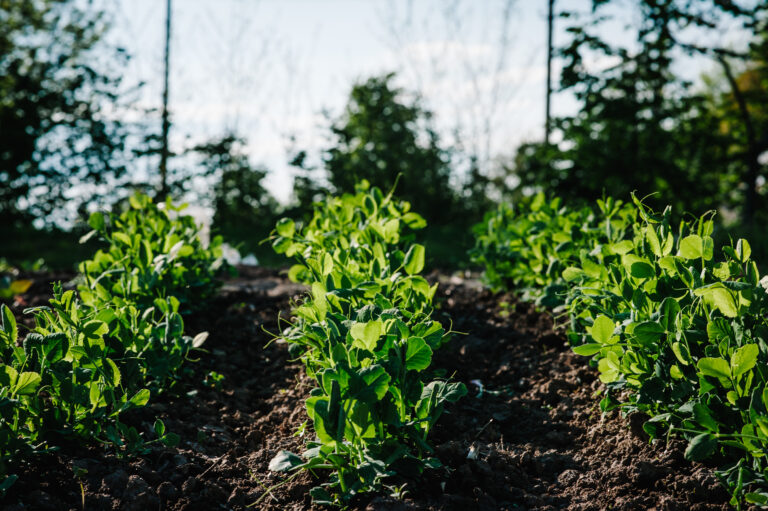Chickpea Care Guide: Weeding, Mulching, Trellising, and Seasonal Maintenance
Growing chickpeas is surprisingly low maintenance, but a few well-timed care tasks can dramatically increase pod production and keep your plants healthy through the cool season. After years of raising chickpeas in raised beds and wide-row layouts, I’ve learned that the keys to success are early weed control, light mulching, minimal trellising, and simple seasonal upkeep. This guide brings together the practical maintenance steps that consistently deliver strong plants and abundant pods.
Why Chickpea Maintenance Matters
Chickpeas thrive in lean soils and cool weather, but they are sensitive to competition, excess moisture, and crowding. Good care helps you:
- Keep soil loose and weed-free
- Maintain airflow and reduce disease pressure
- Prevent lodging (plants falling over)
- Support strong flowering and pod development
A little attention at the right time goes much further than heavy intervention later.
Weeding Chickpeas: Light but Consistent
Chickpeas dislike root disturbance, so the goal is gentle weed control.
Early Weeding (Weeks 1–4)
This is the most important window.
- Hand-pull weeds when small.
- Avoid deep hoeing—chickpeas form shallow feeder roots early.
- Keep 4–6 inches of bare soil around each plant.
From experience, chickpeas grow best when they can capture sunlight without competing foliage in spring’s cool light.
Mid-Season Weeding
Once chickpeas branch and canopy over, weeds become less of a problem.
- Remove only large or aggressive weeds.
- Lightly cultivate the surface soil if needed, but stay shallow.
Mulching Chickpeas: When and How
Mulch can help, but timing is everything.
Early Season: Use Sparingly
Chickpeas prefer warming soil.
- Delay mulch until plants are 6–8 inches tall.
- Heavy mulch too early slows growth and keeps soil too wet.
Mid-Season: Add Light Mulch
Once temperatures rise:
- Apply 1–2 inches of straw, shredded leaves, or dry grass.
- Keep mulch light—chickpeas do better with some airflow around the soil.
- Mulch reduces evaporation and helps prevent heat stress during flowering.
Late Season
As pods turn yellow, keep mulch dry or gently pull it back to help ripening.
Trellising Chickpeas: Do You Need It?
Most chickpea varieties grow 18–24 inches tall and generally don’t need heavy support. But wind, rain, or very fertile soil can cause lodging.
When Trellising Helps
- In windy gardens
- In wide beds where plants branch heavily
- For large Kabuli varieties that get floppy
Simple Support Options
- Low pea fences (18–24 inches tall) along rows
- Short bamboo stakes between every few plants
- String grids in raised beds to keep plants upright
In my garden, a low trellis has consistently improved airflow and reduced fungal issues in wet springs.
Seasonal Maintenance Checklist
A month-by-month rhythm helps keep chickpeas productive without overcare.
Early Spring (Planting to 4 Weeks)
- Weed carefully and consistently
- Keep soil lightly moist
- Delay mulch
- Thin seedlings to proper spacing (6–8 inches)
Mid to Late Spring (Branching to Flowering)
- Add a light mulch layer
- Reduce watering slightly to encourage flower formation
- Install low trellising if needed
- Check for aphids—remove by hand or spray with water
Early Summer (Pod Development)
- Keep mulch dry to prevent fungal issues
- Water sparingly but deeply when soil dries
- Maintain airflow by removing weeds or suckers from nearby crops
Ripening Stage
- Stop watering dry beans when pods yellow
- Remove mulch if soil stays too damp
- Harvest when pods dry on the plant
Troubleshooting Chickpea Care Issues
Plants Falling Over
Cause: Wind, heavy growth, or overly rich soil
Fix: Install a low trellis; reduce nitrogen inputs
Leaf Yellowing Early
Cause: Overwatering or waterlogged soil
Fix: Improve drainage; water deeply but less frequently
Poor Pod Set
Cause: Too much moisture during flowering
Fix: Reduce water; add light mulch to moderate soil temperature
Weedy Beds
Cause: Late weeding or wide gaps
Fix: Weed early; use light mid-season mulch
Final Thoughts
Chickpeas are naturally rugged plants, but they flourish with thoughtful care—gentle weeding early on, light mulch as temperatures rise, optional support to keep branches upright, and seasonal adjustments that match their cool-season growth cycle. With these simple maintenance steps, chickpeas become one of the easiest and most rewarding legumes to grow in a home garden.
Chickpea Learning Hub
Start Here / Overview
- Mastering Chickpeas: Planting, Growing, and Harvesting Tips
- How to Plant, Grow, and Harvest Chickpeas (Garbanzo Beans): The Complete Guide
Planning & Planting
- Best Chickpea Varieties to Grow: Kabuli, Desi, Black, and Specialty Types
- Short-Season Chickpeas: Best Varieties and Tips for Cooler Climates
- When to Plant Chickpeas: Temperature, Frost Windows, and a Month-by-Month Calendar
- How to Start Chickpeas From Seed: Indoors, Outdoors, and Spacing Tips
- Can You Grow Chickpeas in Containers? What Works—and What Doesn’t
- Growing Chickpeas in Raised Beds
- Best Companion Plants for Chickpeas (and What to Avoid)
Care & Maintenance
- How to Water and Feed Chickpeas for Maximum Pod Production
- Chickpea Care Guide: Weeding, Mulching, Trellising, and Seasonal Maintenance
Pests, Diseases & Troubleshooting
- Chickpea Pests: Identification, Prevention, and Organic Controls
- Chickpea Diseases and How to Prevent Them: Blight, Mosaic, Anthracnose & More
- Troubleshooting Chickpeas: Why Plants Fail, Don’t Flower, or Don’t Make Pods
Harvesting & Post-Harvest
- Harvesting Chickpeas: Fresh Green Pods vs. Dried Beans
- How to Store and Preserve Chickpeas: Fresh, Dried, Canned, or Frozen
Cooking & Enjoying




